Captured images are important to a photographer, as a lot of sweat goes into the process. When the photo creators encounter missing pictures later, it only leaves them with frustration and disappointment. Luckily, there are many methods that can be used to retrieve the missing photos. This article bears good news for the photography community by exploring ways to Recover Photos from Canon PowerShot.
Try Recoverit to Perform Canon Photo/Video Recovery

In this article
Part 1. Is It Possible to Recover Data from a Canon PowerShot?
It is possible to recover data from a Canon PowerShot camera, especially if the lost files haven’t been overwritten. Using reliable recovery software, users can scan the camera’s SD card to retrieve deleted photos and videos. Stopping camera use immediately after data loss greatly improves recovery chances. If software fails, professional Canon PowerShot photo recovery services can often restore inaccessible or corrupted files.
Part 2. What Causes Photos to Be Lost on Canon PowerShot?
Before trying out any fixes, you must understand the causes of a missing file. The following points feature the reasons why your multimedia documents could be lost:
- Accidental Deletion: This is the most popular reason of losing photos in a Canon PowerShot, and it happens while viewing them. The users often also hit the wrong button or use the Delete All option without knowing that they are deleting images.
- Memory Card Corruption: Corrupted cards contain a set of SD cards that are inaccessible or show error. This is usually caused by wrong file ejection, malware infection, or formatting problems during file transfer, and is one of the common memory card errors.
- SD Card Formatting: Formatting the memory card deliberately or accidentally erases images and videos stored in the memory card. Despite the fact that formatting destroys directory data, it still has the potential to recover the data as long as it has not been overwritten.
- Power Failure or Battery Problems: The sudden loss of power while saving or transferring the photos might halt the writing process and result in incomplete or corrupted files. Poor battery performance during image capture or copying may also pose a threat to the loss of the data.
- Physical Damage or Connection Problems: An SD card, card reader or a broken USB cable may cause the Canon PowerShot to not recognize or store pictures. Physical damages to storage parts can be caused by exposure to moisture or bending and would need a Canon PowerShot recovery solution.
Part 3. Basic Steps to Prevent Further Loss Before Recovery
Before using any advanced recovery methods, the first approach should be to prevent further data loss. The following measures must be taken to avoid image deletion:
1. Stop Using the Affected Device Immediately
Once you suspect data loss, stop using the Canon PowerShot or memory card right away to prevent overwriting deleted files. Every new photo or video taken may permanently erase recoverable data. Immediate action ensures the highest chance of successful photo recovery through software or professional tools.
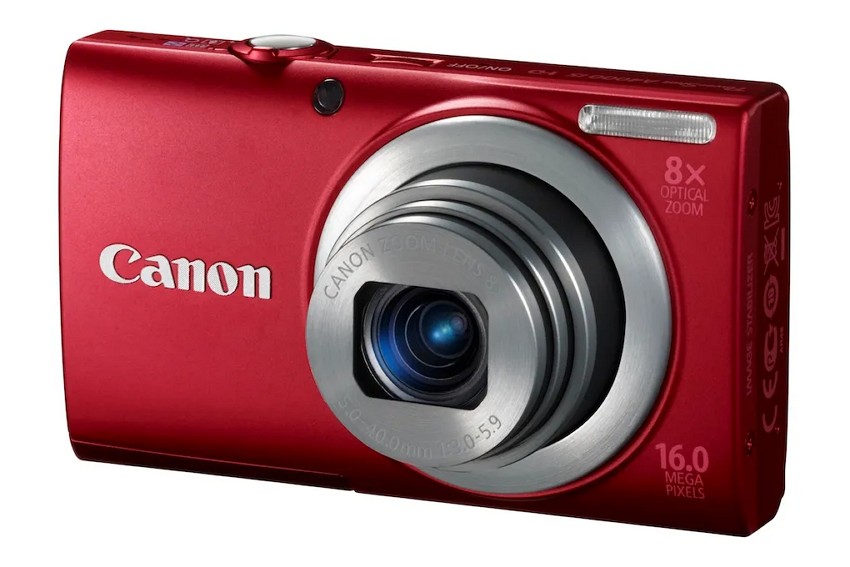
2. Disconnect from the Internet or Network
If your camera or connected device is online, disconnect it to avoid automatic syncing or overwriting of deleted files. Cloud services and background updates can replace recoverable data with new content. Staying offline preserves the card’s original data structure for more effective Canon PowerShot recovery results.
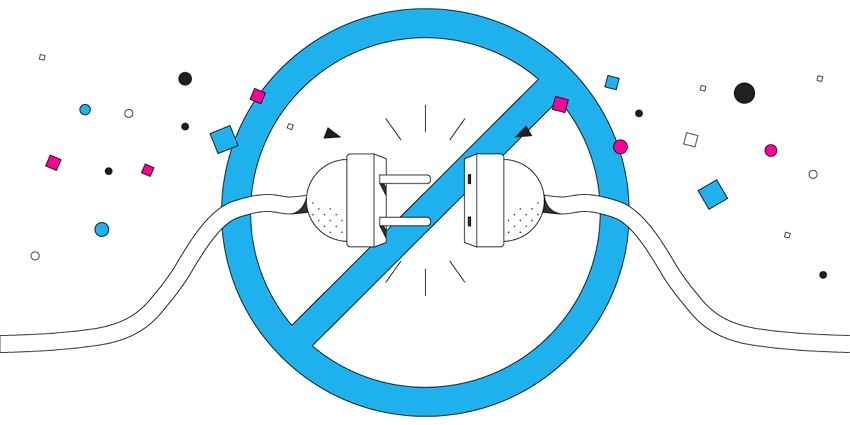
3. Identify the Root Cause of Data Loss
Determine whether your photos were deleted, formatted, or lost due to card corruption before starting recovery. Knowing the cause helps choose the correct recovery method or tool. Proper diagnosis prevents further damage and improves the likelihood of retrieving complete, uncorrupted files.

4. Avoid Rebooting or Reinstalling the OS
Rebooting or reinstalling your computer’s operating system can rewrite storage sectors and make recovery impossible. Always keep the affected drive or SD card untouched during troubleshooting. Instead, perform recovery operations from another device or system to avoid accidental overwrites.

5. Create a Full Image Backup of the Drive
Before attempting any methods to Recover Photos from Canon PowerShot, make a full image backup of the SD card or drive. This cloned copy preserves the current data state and allows multiple recovery attempts safely. It also prevents additional data corruption during scans or repairs, maintaining the original media intact.

6. Contact a Certified Data Recovery Specialist
If DIY recovery methods fail, reach out to a certified data recovery expert for safe, professional assistance. Specialists use advanced tools and cleanroom techniques to extract data from severely damaged cards. Their expertise greatly increases success rates, especially for physically compromised or encrypted storage devices.

Part 4. Solution to Recover Photos from Canon PowerShot: Manual Methods
After taking measures for preventing further data loss, you must prepare for built-in device methods for data recovery. Go through the following section to explore the built-in Mac and Windows solutions for Canon PowerShot photo recovery:
A. Check the Recycle Bin or Camera Software
This method is significant because it allows users to recover deleted photos quickly without any technical tools. The Recycle Bin or built-in Canon software often stores recently deleted images, making it easy to restore them instantly. Regularly checking these locations can prevent unnecessary data loss and save recovery time. Follow these steps to retrieve images from the Recycle Bin:
Instructions. First, locate the missing files in the Recycle Bin and right-click on them to “Restore” them using the pop-up menu.
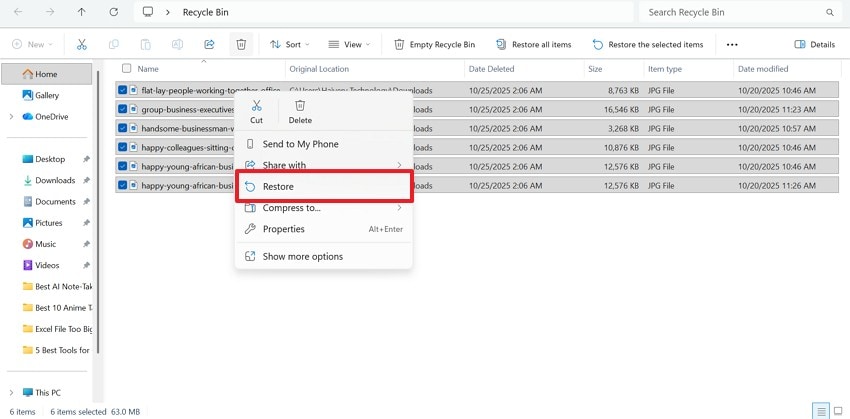
B. Use Windows or Mac Built-in Recovery Tools
Built-in system recovery tools provide a reliable and accessible way to restore Canon PowerShot photos lost from connected storage devices. On Windows, using File History or Previous Versions helps retrieve earlier file states before deletion or damage. On Mac, Time Machine automatically restores lost or deleted photos from previous backups.
These native tools ensure data safety without relying on third-party software or risky external methods. Follow these instructions to learn how to use Mac and Windows' built-in methods for Canon PowerShot recovery:
Windows
- First, connect your SD card or storage drive to the computer and go to the folder where the photos were originally stored. Once the file is located, right-click on it and select the “Properties” option.
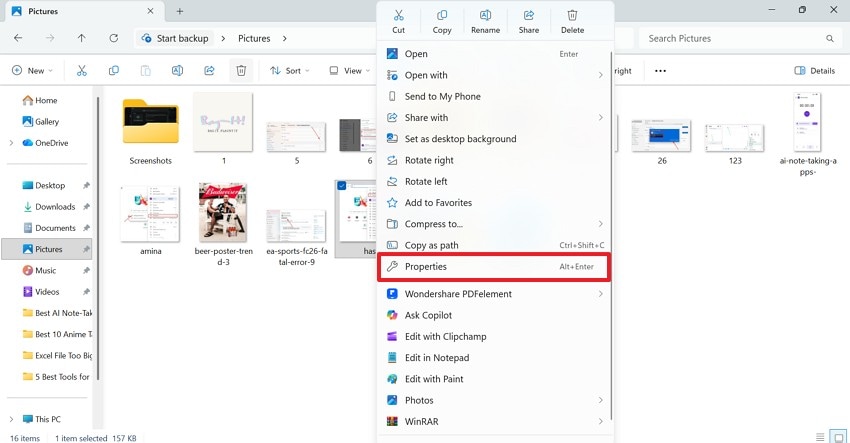
- In the “Properties” window, enter the “Previous Versions” section and select the time and date for the version you want to restore. Lately, click the “Restore” button to regain access to that version of the image.
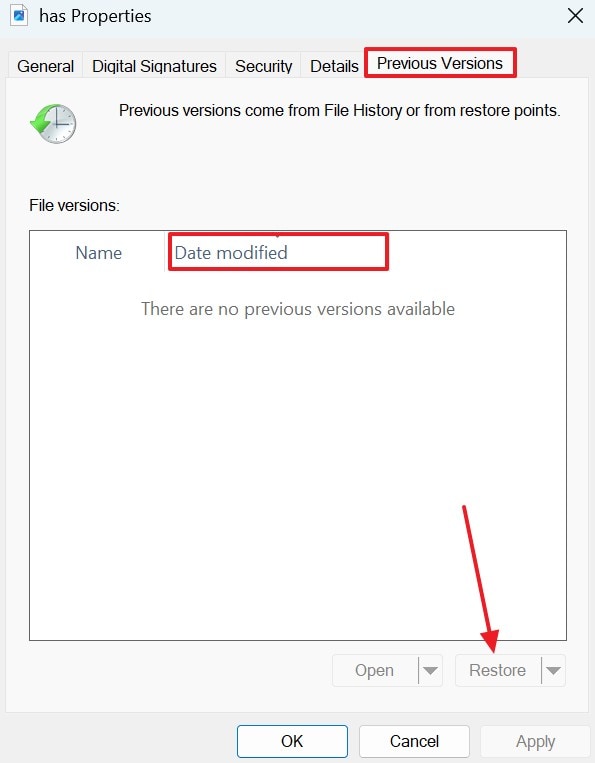
Mac
This method features the built-in Time Machine technique on macOS devices. Using it, users can save and access all versions of a specific file on their Mac. Once you have found the intended file, it will be saved in its original folder for easy access. The following steps are about using this technique to recover deleted files:
- As you access the desktop interface of your Mac, select the “Time Machine” icon from the Applications menu.
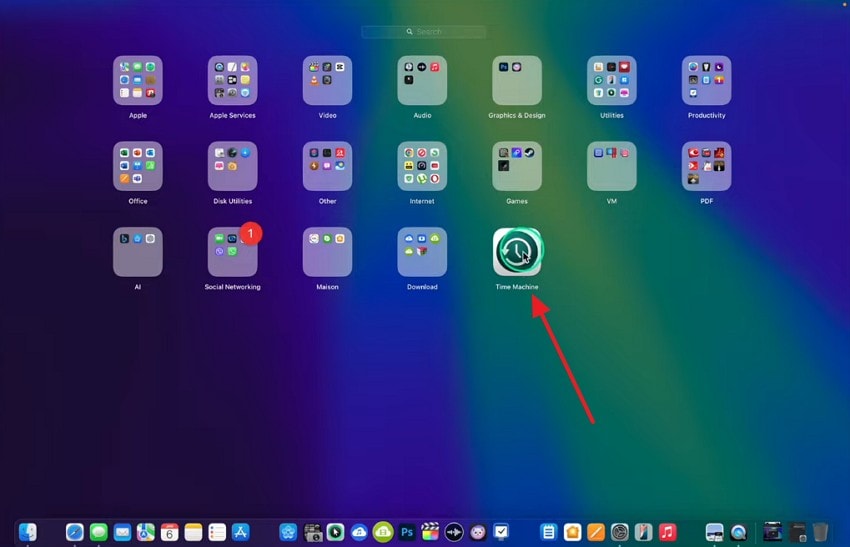
- Using Finder, select the folder where you last saved the file, or you can search for the file by entering its name.
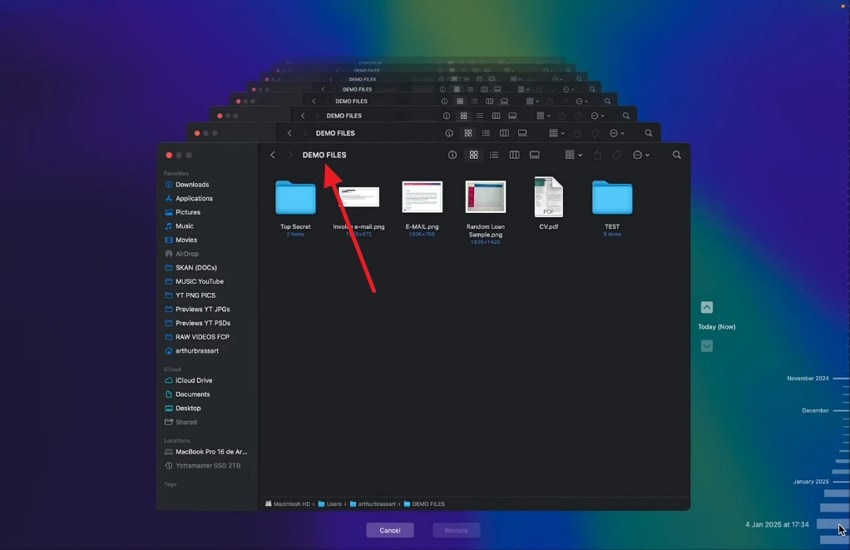
- Consult the arrows or the timeline on the right to find the file that you are looking for. Upon finding the file, press the “Spacebar” key to preview the file and select the “Restore” button to recover it.
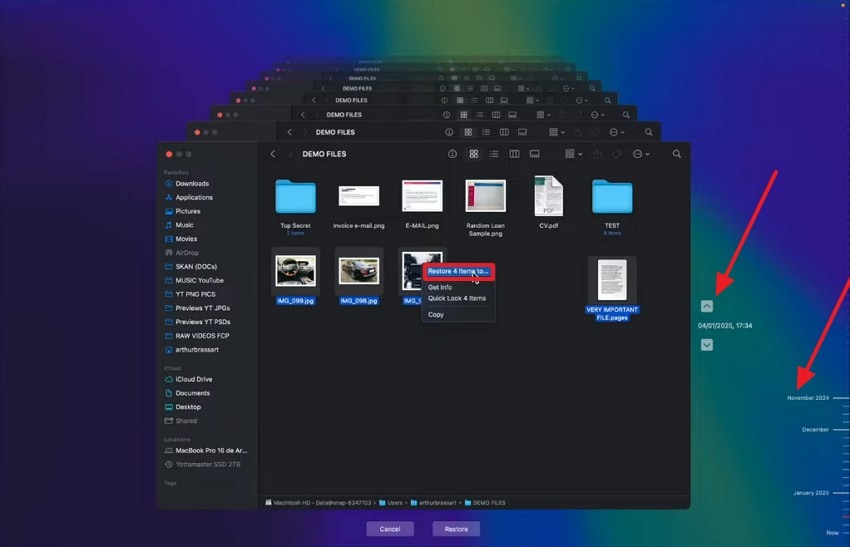
Part 5. Use Certified Recovery Tools Only to Recover Photos from Canon PowerShot
If the above-mentioned techniques of Canon PowerShot photo recovery fail, it is your cue to use a third-party solution. Recoverit is an efficient image restoration tool that supports over 1,000 file types, not just images. The 99.5% success rate ensures effective image recovery from cameras. Another way to ensure the process's success is to preview the file after recovery using the dedicated feature.
Recoverit enhances its flexibility by being functional for both Windows and Mac devices. Although the file scan process is automated, the users are free to add a custom search filter. In case you are not able to find the intended file through the Quick Scan, then find it through Deep Scan. When the file recovery process is finished, your retrieved documents will have a preserved quality.
Key Features
- Lost File Scenario: For enhanced effectiveness, Recoverit caters to over 10,000 scenarios of a missing file.
- Batch Recovery: You can retrieve multiple files in a single go to enhance productivity using Recoverit.
- Compatible Devices: Recoverit supports over 1M+ storage devices, including hard drives, memory cards, and flash drives.
Using Recoverit to Retrieve Missing Canon Image Files
After exploring the features of Recoverit, you must use it for effective Canon PowerShot recovery. Go through the following guide to explore how this tool can be used for immediate retrieval of media files:
1. Select the Location of a Missing Canon Image File
To begin with, open Recoverit and select the location of your missing file from the left panel.

2. Choose the Missing Files and Recover
When the missing files appear on the next interface, select them and click “Recover” to retrieve them.
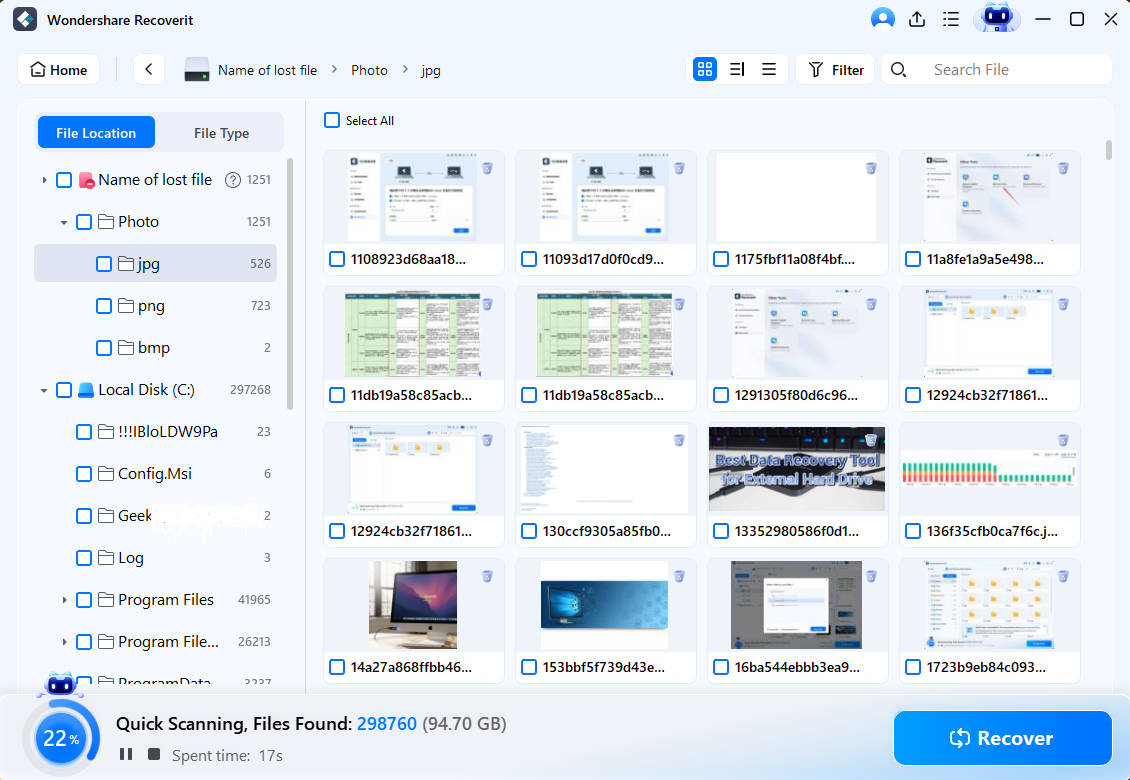
3. Preview the Recovered File
As the Canon image files are recovered, preview them and hit the “Recover” button to save them.
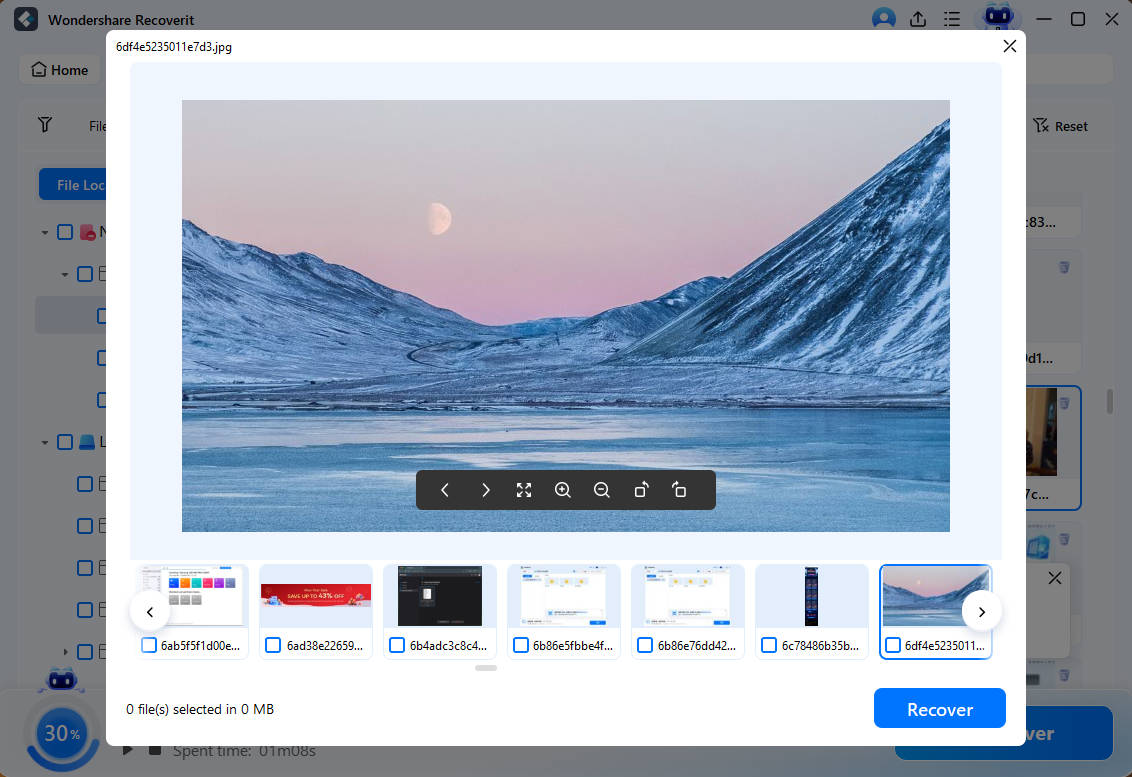
Conclusion
In essence, this article covered the details on how to Recover Photos from Canon PowerShot. After suggesting Windows and Mac built-in restoration solutions, we suggested using Recoverit as a third-party solution. This platform offers deep scanning features to dive deep into the system for finding missing files.
FAQ
-
1. Can I recover deleted photos from my Canon PowerShot camera?
Deleted photos can often be recovered using data recovery software as long as the files haven’t been overwritten. If you are looking for advanced means of restoration, use Recoverit. -
2. What should I do immediately after losing photos from my camera?
After losing images, stop using the camera right away to prevent overwriting deleted data. Remove the SD card and perform recovery using a computer instead of the camera itself. -
3. Can I recover photos from a formatted SD card?
A quick format only removes file references, not the actual data. Use professional recovery tools to scan and restore photos before saving anything new. -
4. Is it safe to use free recovery software?
Recovery tools like Recoverit offer safe file recovery methods to ensure privacy. Moreover, the quality of your original images is preserved during the data restoration process.
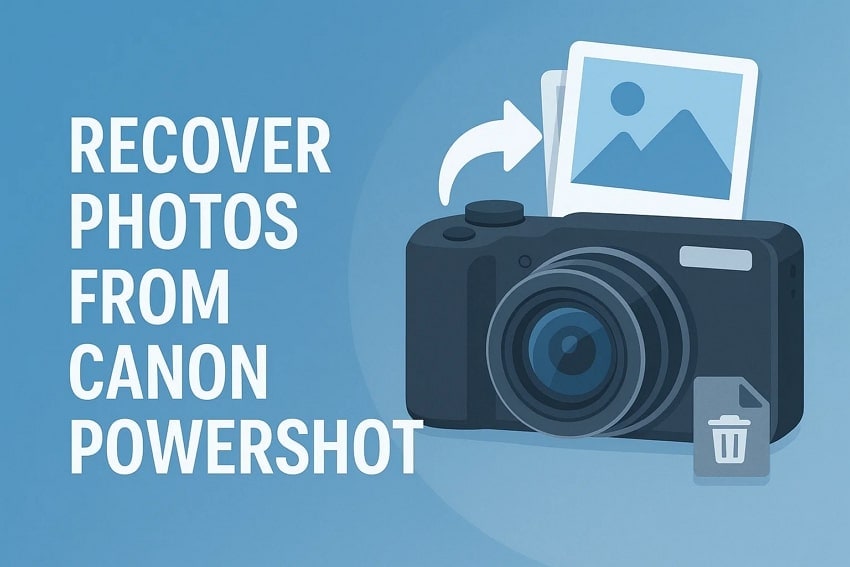



 ChatGPT
ChatGPT
 Perplexity
Perplexity
 Google AI Mode
Google AI Mode
 Grok
Grok























